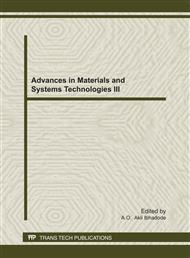p.525
p.537
p.547
p.555
p.561
p.567
p.575
p.581
p.591
Vertical Electrical Sounding as a Tool for Estimating Thickness of Clay Deposit in Delta North District, Nigeria
Abstract:
Geophysical survey based on “Schlumberger” array of vertical electrical sounding (VES) was carried out to study the quantity of clay deposits in Delta North District, Nigeria. Obviously, the quantity of clay deposit depends on its thickness. Previous researchers did not work in this area primarily to search for the clay deposit. The need to prospect or search for clay deposits in this area became inevitable so as to solve the problem of youth restiveness in the area by way of setting up industries in Delta North district that rely on clay for manufacturing purposes. Ten (10) VES, uniformly distributed in six different stations in Agbor were carried out using six (06) points per decade with maximum current electrode spacing of 928.0m. The software IP12WIN utilizing computer iteration was used for interpretation of apparent resistivity data. The result of the resistivity survey showed that clay and clayey soil (clay mixed with other rock types) were present. The depths and thicknesses of each clay formation were then ascertained. Depths to probable clay formations varied from 0.5m to 90m while the thicknesses varied from 0.95m to 7.00m.
Info:
Periodical:
Pages:
561-566
Citation:
Online since:
October 2011
Authors:
Price:
Сopyright:
© 2012 Trans Tech Publications Ltd. All Rights Reserved
Share:
Citation:


